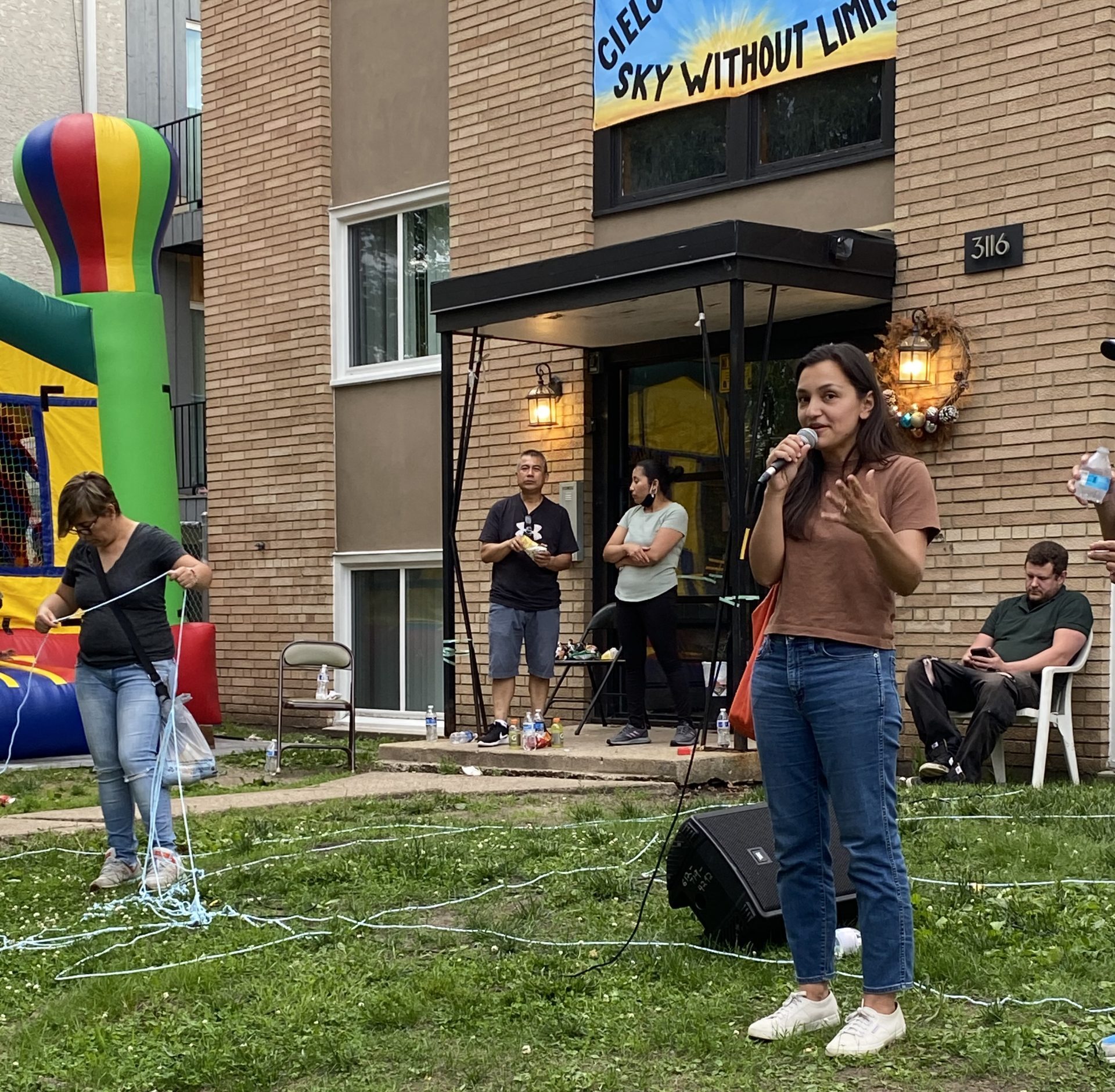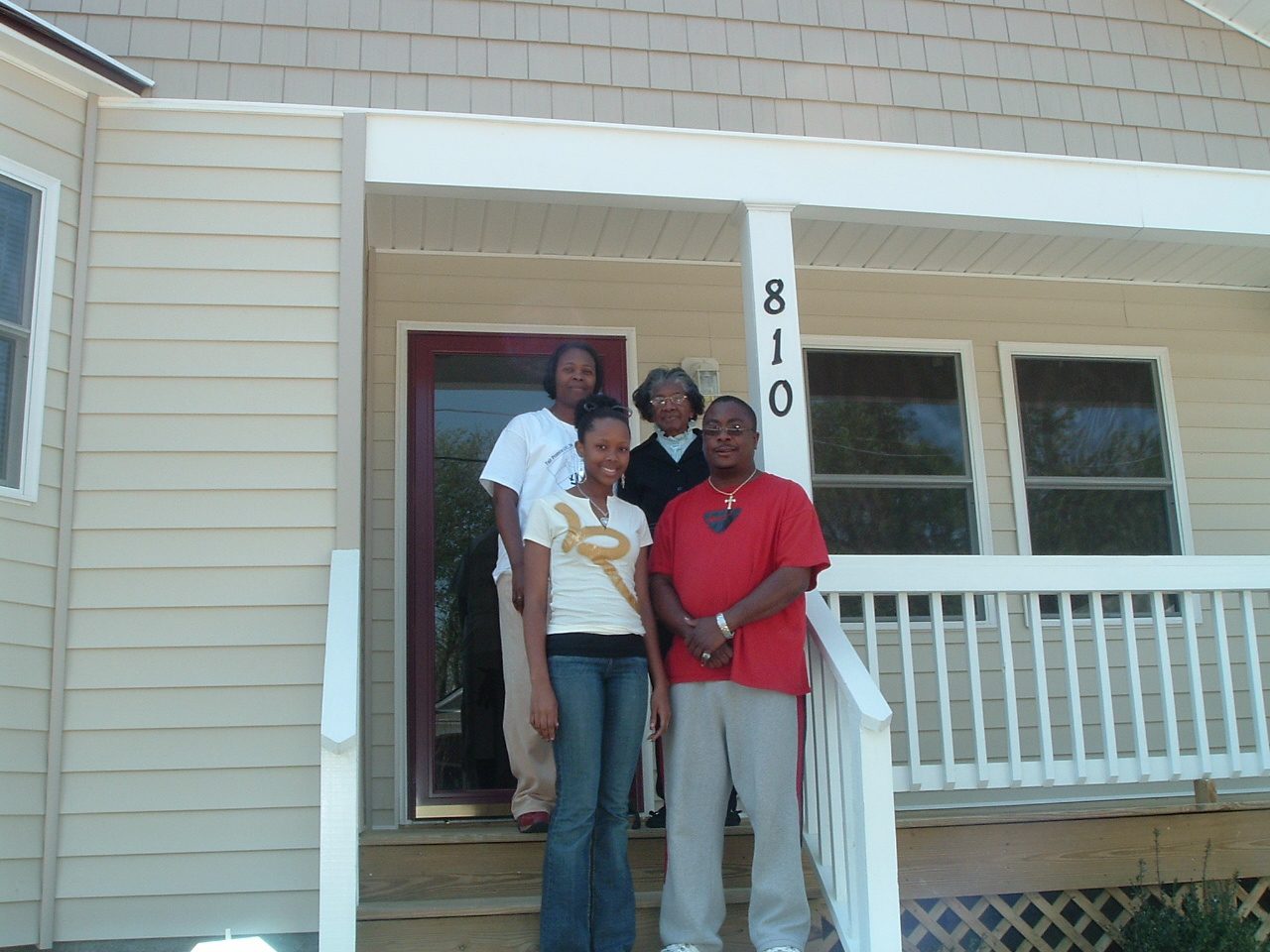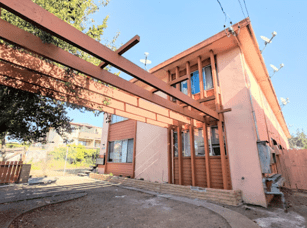This article is part of the Under the Lens series
Community Ownership Takes Center Stage

Photo by KTStock, iStock
You may be hearing a lot about community land trusts right now. They’ve become a popular answer to the question “How will we prevent displacement?” or “How do we keep housing permanently affordable?” But what are community land trusts, and how do they work? This page will give you a quick introduction to the topic, with lots of links to further reading from Shelterforce and advocacy organizations.
What Are CLTs?
A community land trust (CLT) is a structure that allows land to be held “in trust” for community needs, outside of the influence of market pressures. A classic CLT is an independent community-controlled entity that owns land and takes care of (or “stewards”) that land, making sure it is being used in ways that support the community it is accountable to.
CLTs have also been established by other community developers, by coalitions of nonprofits, and by government agencies. There are many variations in form.
Land in a CLT can be used for many things—agriculture, small businesses and community facilities, community gardens, rental housing, cooperative housing, and homeownership. CLTs are currently best known for providing permanently affordable housing, though the very first one—New Communities Inc.—was a collective farm formed by Black families in Albany, Georgia.
One of the most unusual things about a CLT is that it can separate the ownership of land from the ownership of the buildings on that land. This separation of land and building allows homeowners and businesses to have control and security as owners, while the community has a backstop to ensure that when the land changes hands it stays affordable and in community-serving uses.
For CLT homeowners, this means getting a below-market price on a home (land can account for 20 to 50 percent of a house’s price, depending on location) and getting support from the CLT to stay a homeowner. They get a 99-year renewable, inheritable lease on the land, so their tenure is just as secure as a typical homeowner’s. In exchange, they agree to restrictions on how much they can resell the property for, according to a formula that will let them build some equity but will also keep the home affordable for others of the same income level.
Long-term stewardship only works when the organization lasts, so to realize long-term benefits it’s important that land trust organizations be stable and sustainable. This leads to a lot of conversations about balancing scale and community control.
CLTs are one form of what’s known as “shared-equity housing,” along with limited-equity cooperatives, resident-owned mobile home communities, and deed-restricted inclusionary housing.
What They Are Not
A community land trust is not a conservation land trust, which is focused on preserving open space.
It is also not a land bank. (Here’s the difference between a community land trust and a land bank.)
A community land trust is also not a shared-appreciation mortgage, in which a lender takes back a percentage of a home’s appreciation at sale or refinancing.
What Are the Benefits of a Community Land Trust?
- Community land trusts keep housing affordable in the long term, allowing lower-income households to continue to have access to neighborhoods that are increasing in price.
- Community land trusts recycle a single public investment in affordability. The resale restrictions mean one initial subsidy that made a home affordable stays with the home, keeping it affordable in perpetuity, as opposed to being lost once affordability restrictions lift.
- Community land trusts support their residents, and homeowners on CLTs have much lower rates of delinquency and foreclosure than homeowners in the regular market. The terms of the ground lease allow CLTs to intervene if a homeowner is struggling with their mortgage. This means community land trusts have value even in markets that aren’t rapidly becoming high cost.
- Community land trusts insulate land from speculation and provide a mechanism for ensuring a community voice in the use of land.
- As questions are being raised about how well the open market can advance racial equity, community land trusts are increasingly serving homebuyers of color. Leaders of color have been at the forefront of starting new land trusts in places including Houston, Washington, D.C., Baltimore, New York City, and more.
How Are CLTs Community Controlled?
While there are many variations, a typical community land trust has a dues-paying membership consisting of residents or other users of its land and residents of the surrounding area who wish to join (referred to as the “corporate community membership”). The membership elects two-thirds of the board—one-third residents, one-third other community members. The remaining third of the board is composed of various other stakeholders, experts, and supporters, as with a typical nonprofit.
Importantly, a community land trust can’t dispose of land without the approval of its membership.
Do CLT Homeowners Build Assets?
Yes!
While concerns are often raised that limits on resale prices restrict CLT homeowners’ ability to build meaningful equity, it turns out CLTs are actually a powerful tool for asset building.
- Because of who is targeted, land trust homeowners are generally people who would have been renting otherwise, not people who had access to homes with no resale restrictions, so it helps people build assets through homeownership who wouldn’t otherwise.
- Lower-income homeowners and homeowners of color often struggle to maintain homeownership for longer than five years, which is too short a time to have realized equity gains. The support of a CLT ensures much higher homeownership success rates, and therefore more actual asset building.
- Research has found that CLT homeowners do build enough equity to buy a home on the open market if they want to—through the forced savings aspect of a mortgage, modest appreciation, and the cost savings of having an affordable home.
How to Start a Land Trust
First, think carefully about whether you want to start one, work with one, or spin one off. Organizing, land stewardship, and housing development require different skill sets. Different CLTs have had different answers to whether all three should all happen in the same organization. Learn from their insights.
Check out Grounded Solutions Network’s CLT Start-Up Hub for more information and assistance. You might also be interested in the toolkit Creating Community Controlled, Deeply Affordable Housing from Partners for Dignity and Rights.
Sign up for Shelterforce’s mailing list and get the latest news on CLTs and affordable housing overall.
Additional Reading
- Housing Solutions—Centering Community in Ownership, Control, and Long-Term Affordability
- Organizing and the Community Land Trust Model
- El Caño Vive, La Lucha Sigue! Community-Controlled Land in Puerto Rico
- Helping At-Risk Homeowners Stay Put With a Land Trust
- Community Land Trusts Across the Pond
- What’s the Point of Shared-Equity Homeownership in Weak Market Areas?
- CLT Homeowners Explore Foreclosure Through Art
- It’s All About Choice—Rather than just developing homes for sale, City of Lakes CLT lets buyers pick houses to bring into the land trust.
- Stewardship Works
- Homeownership Today and Tomorrow
- New York Becomes a Hotbed of Community Land Trust Innovation
- Believe in CLTs? Make Them Sustainable
- New Program Aims to Help Community Land Trusts Get to Scale





I’ve been observing the CLT movement since the 1980s and still have trouble seeing how the complexity of, and the public’s lack of familiarity with, the concept makes it worth doing. I would love to understand how CLTs are better than having a community-committed non-profit develop and sell or rent affordable housing (using the same donations or subsidies as a CLT) with long-term restrictions on speculative resale or conversion to market rate. Why does it not work as well to use soft second mortgages that amortize slowly over many years if the buyer stays put? Or don’t amortize at all, but in exchange for the below-market initial price, the buyer will split the upside at sale with the non-profit, for reinvestment into other homes. Is it wise to perpetually remove a home from the conventional market when it is so hard to predict a neighborhood’s needs more than a generation out?
Roy,
The CLT is one way to preserve and keep some housing permanently affordable. It is reasonable to predict that reinvestment in existing neighborhoods results in rising prices and values. In my opinion, it is wiser to sustain affordability through CLT ownership than to expect subsidies will replace the existing housing lost to market pressures.
It is worth pointing out that the HOME program (likely one of, if not the largest sources of capital subsidies for these projects) has a statutory definition of a “community land trust.” As the CLT community has grown, evolved, and diversified the mechanics of the model, not every “CLT” today meets that definition (which, for example specifies being a membership based organization and not merely director based). Absent meeting the specific definition, some “CLTs” are not eligible to make use of specific flexibilities in HOME that are reserved only for “community land trusts.” Unfortunately these issues aren’t well understood, so some communities are operating outside of HOME requirements without realizing or even necessarily meaning to, but risking compliance findings nonetheless.
Good point Stephen!